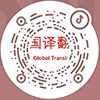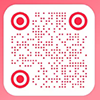Specific Solutions
Translating Corporate Promotional Copy:
More Than Language—It’s About Communicating Value
Corporate promotional materials—such as company brochures, brand narratives, websites, press releases, CSR reports, and investment summaries—are key tools for shaping brand image and communicating values to a global audience.
Unlike technical documents or contracts, corporate copywriting carries tone, emotion, positioning, and personality. So when this type of content is translated, the real challenge lies not in getting the words right—but in getting the message to resonate.
I. What Makes Corporate Promotional Texts Unique?
These materials are not just informative; they’re persuasive. They aim to:
Reflect brand values and company culture
Build trust with partners, clients, or investors
Convey a consistent tone across cultures and platforms
Shape global perception of the company
They often appear in multiple formats and contexts: websites, trade show banners, business decks, investor kits, and multilingual press kits. That means translation must be precise, elegant, and brand-consistent—all at once.
II. Why Literal Translation Isn’t Enough
Let’s take a typical example:
Original (Chinese): 我们始终秉持“以客户为中心、以奋斗者为本”的发展理念
Literal translation: We always adhere to the development philosophy of “customer-centered and striver-oriented”
Improved version: We are driven by a customer-first mindset and powered by a culture of dedication and innovation.
The literal version is technically accurate, but awkward and unnatural. The improved version captures the intent, tone, and rhythm—which is what good corporate translation is really about.
Corporate copy translation is often closer to rewriting within a brand framework than it is to direct conversion.
III. What Skills Does Good Corporate Translation Require?
1. Bicultural Sensitivity and Language Intuition
Successful translation of promotional content requires an understanding of how different cultures communicate ideas.
For instance:
Chinese prefers abstract summarization; English favors concrete specifics
Chinese emphasizes duty and harmony; English often emphasizes impact and vision
Chinese uses more passive voice and formal tone; English leans toward active voice and clarity
A good translator reads between the lines—not just the words, but the values and expectations behind them.
2. Understanding of Brand Positioning
A tech company, a manufacturer, and a charity all communicate differently.
A tech firm may focus on “innovation, global vision, R&D strength”
A manufacturer may emphasize “quality, efficiency, systems”
A non-profit may highlight “purpose, values, community impact”
The translator must match the brand’s voice, not overwrite it with generic phrasing.
3. Structural Clarity and Flow
Clarity is key. Translating corporate content often requires:
Adjusting sentence structure
Reorganizing ideas for logical flow
Adding connectors or clarifiers
Ensuring readability in the target language
Especially for international audiences, less is often more—concise, well-paced writing creates greater impact.
IV. What Does a High-Quality Translation Look Like?
It reads naturally, not like a translation
It retains the core message, while adapting phrasing and flow
It matches the tone and voice of the company
It’s free from cultural missteps, awkward idioms, or misleading metaphors
It works across different formats—web, print, presentation, video
In short, it does what the original does: communicate clearly, persuasively, and credibly.
V. Final Thoughts: Translation Should Be True—and Tasteful
Corporate translation is not about “sounding bilingual.” It’s about creating connection. When done well, translated promotional content doesn’t just inform—it inspires trust, opens doors, and strengthens your global brand.
Translators working on these materials must go beyond grammar. They must ask:
Who is the company?
What do they stand for?
Who are they speaking to?
Only then can translation move from “correct” to compelling.


















